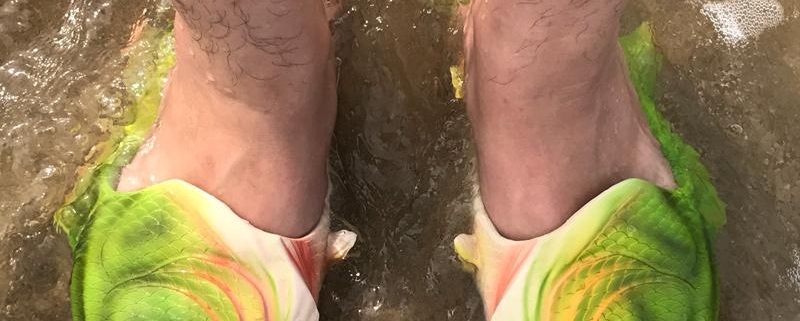Summer is coming – The pro’s & cons of flip-flops
Flip-flops and slip on shoes in general (for the purpose of this article we will just call them all flip-flops) are great for being easy to get on and off quickly and for keeping cool and showing off your feet when you’re wearing shorts.
Unfortunately, that is all they are good for!
They have a place in your wardrobe for wearing in public showers/changing rooms and on the patio when having a BBQ, and that is about as far as you should travel in them.
Flip-flops change the action of how you use your foot when walking. This is due to the foot having to grip to keep the shoe from falling off. They also trick your feet into thinking you have footwear on and then provide little to no support for your foot. This extra work will cause fatigue in your feet and calves and may even lead to overuse injuries. In the short term the acute increase in stress on your feet can cause pain and inflammation in the soft tissues of your feet, ankles and calves. With prolonged use flip-flops can cause chronic shortening of these tissues leading to a change in the way you move; this in turn creates continued overload of some very important structures in your lower legs.
The growing market for ‘good for you flip-flops’ (such as Birkenstock and Fitflops etc) do help a little on the support side, but ultimately they are still a slip on shoe and will affect your foot mechanics. You are still increasing the load on your lower leg and changing the way you walk due to your footwear.
Some common conditions we see regularly in clinic due to flip-flop use include: plantar fasciitis, tibialis posterior tendinopathy, Achilles tendinopathy, tight calves, heel bursitis and reduced big toe mobility – which is a mechanical nightmare for numerous reasons. There is no guarantee that you will suffer with these conditions if you spend your summer in flip-flops, but you are significantly increasing your chances. Pain can be a very late symptom in a lot of these cases and the soft tissue changes can go undetected for months or years before they become a problem.
In conclusion: If there is any risk of you walking more than 100m total that day in your flip-flops – choose different footwear!
For those that are not that into reading – here is a video that sums this up: https://www.mobilitywod.com/propreview/athletes-dont-wear-flip-flops-episode-219/



